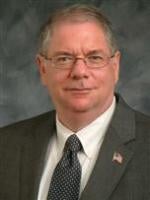Federal Aviation Administration (FAA) has come a long way toward integration of unmanned aerial vehicles (UAVs) into the national airspace, though there is still a ban on commercial UAV operation without express FAA approval. On May 1, regulators took another large step by granting Yamaha an exemption in order to operate a UAV large enough for crop-spraying operations. It is called the RMAX, and it is larger and heavier than any unmanned aircraft system previously approved to operate in U.S. airspace. The RMAX is 9 feet long and 3 feet by 6 inches tall, has an empty weight of 141 pounds, and a load capacity of about 61 pounds for both liquid and granular applications.
The RMAX will immediately prove its use in precision agriculture to U.S. farmers by allowing increased productivity, lower costs and reducing the amount of chemicals needed to treat fields. It does all of this while also being safer than other air and ground based chemical treatment methods—it reduces human exposure to chemicals and is less likely than manned aircraft to cause damage in the event of an accident.
Yamaha cited the RMAX’s proven track record in support of its petition. It has been in use for more than 20 years in Japan, and was more recently approved for operations in both Australia and South Korea. The UAV has logged two million flight hours over 2.4 million acres of farmland in Japan alone and has never been the cause of an accident that caused human injury.
However, the FAA did issue restrictions on the use of the RMAX in order to ensure safety. It can only be operated in uninhabited areas within the visual-line-of-sight of both a certified pilot and a visual observer. At no time is the UAV to exceed 400 feet above the ground or 45 miles per hour.
This approval adds to the list of UAV uses the FAA has permitted through its exemption process, including crop surveying and monitoring.





 />i
/>i
